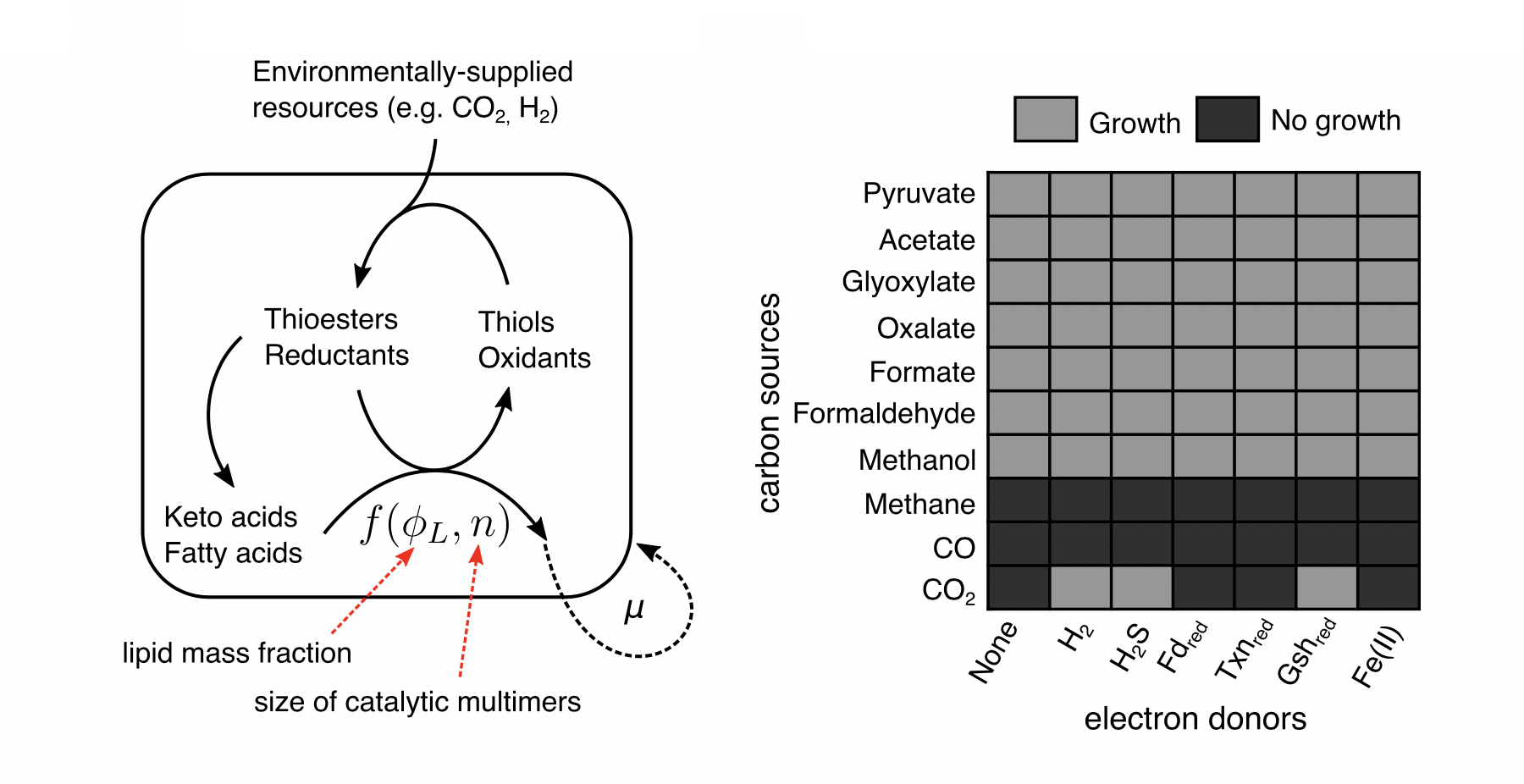Conditions for emergence of self-sustaining metabolic networks

One of the distinctive features of living matter is the presence of self-sustaining metabolic reaction networks. Every time a cell divides, it must take in chemical compounds available in its environment, and use them to double the quantity of each internal molecular species. General properties of such collectively autocatalytic reaction networks have been studied for many decades, but the rise of biosphere-scale databases of biochemical reactions has created new avenues for working out the necessary conditions for the spontaneous emergence of such networks.
My coauthors and I have shown how large and complex self-sustaining reaction networks could have spontaneously arisen in a variety of proposed pre-biotic geochemical scenarios, before the emergence of nitrogen-fixing or phosphate-fixing enzymes (Goldford et al., 2019). I have been investigating the properties of collectively autocatalytic sub-networks in some of these scenarios, and am interested in applying methods from the physics of disordered systems to study the similarities and differences between these real sub-networks and the autocatalytic portions of random networks.